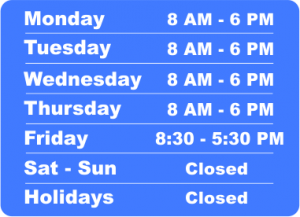
10 Common Childhood Illnesses and Their Treatment
As a parent, you want your little one to stay away from sickness. But, sometimes we cannot avoid any of this sickness as they are part of growing up.
While your baby or toddler might not All children deserve high-quality medical care. As a parent, it is important to be aware of the most up-to-date treatment guidelines so you can be sure your child is getting the best care possible.
The following information from the American Academy of Pediatrics (AAP) lists some of the most common childhood illnesses and their approved treatments. The treatments discussed here are based on scientific evidence and best practices. However, there may be reasons why your pediatrician has different recommendations for your child, especially if your child has an ongoing medical condition or allergy. Your pediatrician will discuss any variations in treatment with you. If you have any questions about appropriate care for your child, please discuss them with your pediatrician.be able to verbalize how he’s feeling, as a parent you can learn to how to recognize signs of illness, how to react once you see them and what you can do to possibly prevent them in the future.
We at Valley Children’s Medical Center, we will take good care of your children and treat as possible any symptoms or sickness that your child feels. If it’s a matter of life and death, please call 911 for emergency right away.
Sore Throat
- Sore Throats are common to children and can be painful.
- Strep cannot be accurately diagnosed by simply looking at the throat.
- Babies and toddlers rarely get it strep throat.
Ear Pain
- Ear pain is common in children and can have many causes
- Amoxicillin is the preferred antibiotic for middle ear infections
- Many true ear infections are caused by viruses and do not require antibiotics.
Urinary Tract Infection
- Bladder infections, also called urinary tract infections or UTIs, occur when bacteria build up in the urinary tract
- Your child’s doctor will need a urine sample to test for a UTI before determining treatment.
- See Detecting Urinary Tract Infections and Urinary Tract Infections in Teens.
Skin Infection
- In most children with skin infections, a skin test (culture or swab) may be needed to determine the most-appropriate treatment.
- See Boils, Abscess & Cellulitis and Tips for Treating Viruses, Fungi & Parasites.
Bronchitis
- Chronic bronchitis is an infection of the larger, more central airways in the lungs and is more often seen in adults.
- See Bronchitis (CDC.gov).
Bronchilitis
- Bronchiolitis is common in infants and young children during the cold and flu season.
- Bronchiolitis is most often caused by a virus, which does not require antibiotics.
- See Bronchiolitis and Treating Bronchiolitis in Infants.
Pain
- The best medicines for pain relief for children are acetaminophen or ibuprofen.
- Narcotic pain medications are not appropriate for children with common injuries or complaints such as sprained ankle, ear pain, or sore throats
- See Fever and Pain Medicine: How Much To Give Your Child.
Common Cold
- Colds are caused by viruses in the upper respiratory tract.
- Green mucus in the nose does not automatically mean that antibiotics are needed; common colds never need antibiotics.
- See Children and Colds and Caring for Your Child’s Cold or Flu.
Bacterial Sinusitis
- Bacterial sinusitis is caused by bacteria trapped in the sinuses.
- Antibiotics may be needed.
- See The Difference Between Sinusitis and a Cold.
Cough
- Coughs are usually caused by viruses and do not often require antibiotics.
- Cough medicine is not recommended for children 4 years of age and younger, or for children 4 to 6 years of age unless advised by your doctor.
- See Coughs and Colds: Medicines or Home Remedies?.

